Thys on the end of Noisia and going solo: "Staying together was becoming more of an effort and less natural"
Following the breakup of Dutch bass trio Noisia, former member Thijs de Vlieger recently released his debut Thys EP and is making plans for a career in soundtrack production
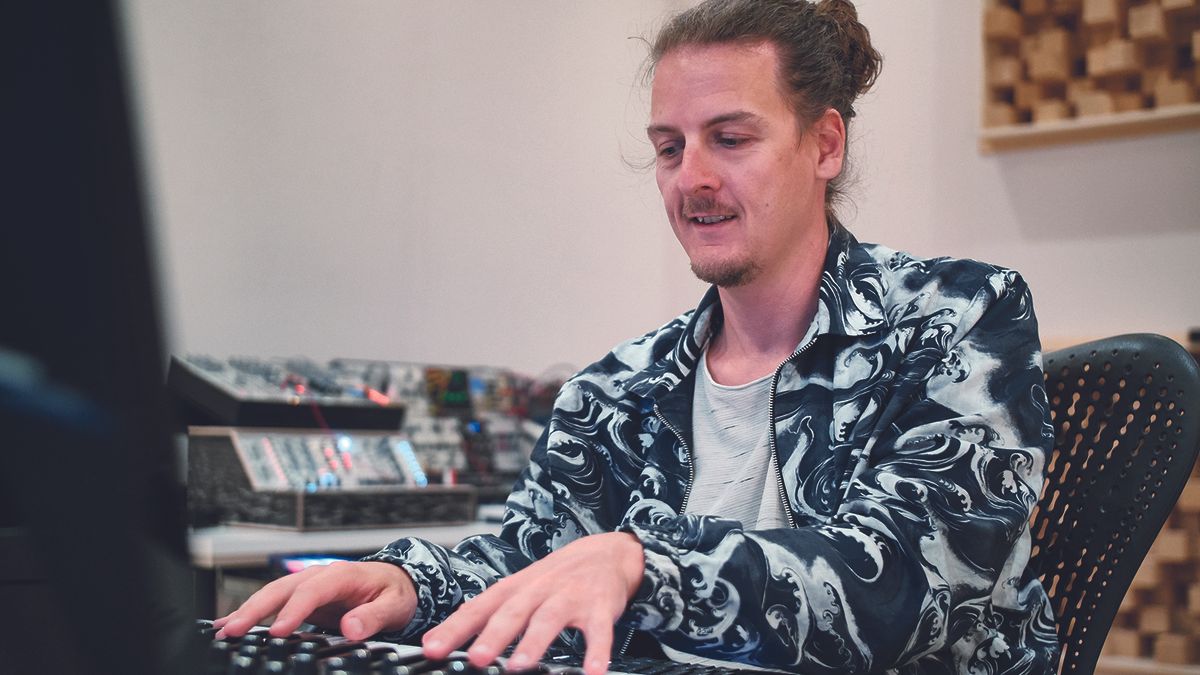
After 20 years working alongside Nik Roos and Martijn van Sonderen as one third of bass behemoth Noisia, Thijs de Vlieger is wasting little time moving on, writing a score for the live contemporary dance and art production Sleeping Beauty Dreams and rebranding himself as Thys for solo electronic productions.
His first Thys release is the futuristic three-track EP Unmoved Mover/Unwound - a cinematic odyssey of driving breakbeats, dystopian synths and orchestral passages. The EP was recorded at De Vlieger’s studio in Groningen, Netherlands, where Noisia still operate from separate rooms.
Meanwhile, the producer has been further collaborating with sound innovator Amon Tobin following the release of the Ghostcards EP earlier this year...
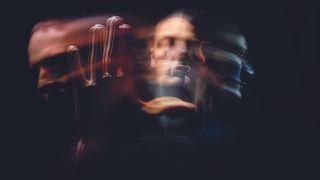
How would you define the end of Noisia and your decision to go your separate ways?
“While the clashing of ideas can be very beneficial, we’ve been together for 20 years. Between the ages of 18 and 38 you change a lot as a person and develop your own tastes, so it would be very rare for our three tastes to develop perfectly in sync.
"Staying together was becoming more of an effort and less natural than at the start when our interests were very much aligned.”
You must have felt a sense of security being in the band. Was leaving that behind daunting?
Get the MusicRadar Newsletter
Want all the hottest music and gear news, reviews, deals, features and more, direct to your inbox? Sign up here.
“Exactly that - the opportunity is great but it’s also pretty scary. Speaking of safety and anxiety, we were going to do a very nice farewell tour to close the chapter - not just for the fans but ourselves - and build a bridge for us to transition into the future. Now that whole tour has been cancelled or postponed due to Covid-19, but we still want to do it next year.”
Is it refreshing to be working on solo material?
“Well I was already doing my own thing, which was a relief. When collaborations go well you energise each other, but when it feels worn down you start to get tired of each others’ perspective.
"When you know there’s going to be conflict in advance, it’s very exhausting for everybody involved. Right now, I’m enjoying the freedom of being autonomous in my musical decision-making and really want to get into film scoring, so I’m basically going back to school by working with a private teacher, reading books and setting a goal to watch three movies every week and expose myself to that kind of music.”
“I’m not done with club music, but after 20 years I’ve severely depleted the glass”
With Covid-19 extrovert DJ/producers will be suffering, whereas introverts might find solace in being alone. Which are you?
“It’s been an amazingly creative time, but I’m absolutely introverted so I’m very much used to this. My studio is corona-proof, so my whole life can just keep going.
"Making music is very complementary to my ideal lifestyle, but I do miss going out and DJing. The funny thing is that some people that are normally introverts can transform on stage into extroverts. Not every show, but with many shows I feel very comfortable being on the microphone directly relating to hundreds or thousands of people without any awkwardness, whereas when I’m sitting at a table with strangers I can feel very uncomfortable. So there’s a magical transformation that can happen on stage to introverted people when they feel they’re a persona and not a person.”
You’ve already created one side-project, Music From Sleeping Beauty Dreams. This was music set to a live contemporary dance performance?
“Dance is absolutely brilliant for a musician because you don’t have to leave space for the performer to speak and they love it when you take all that space because it gives them more of the story to choreograph.
"I do miss the literal storytelling that can happen with film scores or gaming, but in film you’re always amplifying the director’s creative artistic vision. With choreography, there’s much more room for me to be a proper musician because the narrative isn’t set.”
The value of our music does not lie in its compositional or technical skill, but the shared experience of an audience.
The Noisia studio looks such a creative and stimulating space, but does it help to source ideas from different environments?
“It does help, yes, because something changes in the brain when you’re not in your usual space. It doesn’t matter how nice that space is, going somewhere else still gives you a different perspective or influence.
"For making music, I just prefer quiet. When the lockdown first started I created a little home setup in case I couldn’t go to the studio and found that even having speakers and a laptop on my dinner table was a nice change of scenery.
"With laptops these days it’s so easy to have really high-quality sound everywhere. In the early ’90s, having a hi-fi studio was very expensive, but now, even with free software, you only need pay a few hundred dollars for a good audio interface where the digital converters are better than what you’d find in some studios 30 years ago.”
Your new Thys EP has a more cinematic/dystopian feel. Do you still regard it as club music or are you keen to move away from that?
“My influences for this were definitely club music, but placing that where I see myself going in the future, which is more in the realms of cinematic/storytelling music. I’m not done with club music, but after 20 years I’ve severely depleted the glass.
"When we started Noisia, we didn’t realise that our music worked in club culture; we saw it as nerds making music for nerds on the internet or for people listening on vinyl at home. Even after 20 years, it didn’t drop that the value of our music does not lie in its compositional or technical skill, but the shared experience of an audience. The music ‘experience’ is so much more amplified when people listen to it together.”
The track Unwound is very ambitious - especially its cinematic orchestral section. Were the orchestral strings and accompanying sounds entirely generated by software?
“It was already a very cinematic track, but at the end I added a modular sample by playing keys into a polyphonic four-voice pitch control module via CV. I put that recording at the end of Unwound, loved it, then had an idea for a counter-melody and turned to my orchestral library - East West Hollywood Strings and Brass, and for the woodwinds Spitfire Studio. It was a bit of an accident but it triggered so much inspiration, and then the whole track sort of got out of hand.”
You mentioned before that you were studying film composers… Which ones do you find the most inspiring?
“I’m a big fan of Geoff Barrow and Ben Salisbury. They make really nice soundtracks like Annihilation, Ex Machina and the TV series Devs and have a good combination of proper orchestral writing and sound design. But I’m really studying the classical masters like Bernard Herrmann, Jerry Goldsmith and Ennio Morricone, who is a giant.
"I was brought up on classical music, so always had an interest in it, but now I’m being taught music theory by Andy Hill who was very much involved in the revival of Disney pictures like Little Mermaid and Aladdin.”
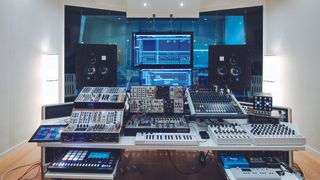
Do you collectively own the Noisia studio?
“We have three identical rooms, so we still see each other in the studio almost every day. We always used to work from two or three studios, but they were bedroom studios and not equal. Eventually we started sitting together and working more as a collective, but we’d also send ideas back and forth.
"We built these studios in 2013 and at the beginning made sure we shared all the same plugins so we could open each others’ projects, but we let that go in the end.”
Can you run through some of the key hardware you’re using for sound generation?
“I recently received a Novation Summit and it’s now the centrepiece of my studio and the only piece of hardware I have in front of me when I’m behind the computer. It’s my MIDI controller and if I have a quick idea for a synth sound I’ll program it on the Summit because it’s absolutely amazing. It’s incredibly flexible and has more physical controls than the Novation Peak, which I was controlling before with my Prophet Rev2, which I also love.
"But the Summit is so powerful and there are so many options with the three wavetable oscillators that can make such wide and deep sounds. The arpeggiator is great, the built-in effects are really useful, there are several analogue distortion stages, and the reverb and delay is nice - it’s just so complete.”
Do you have a set of outboard chains to run gear through?
“Right now I have three specific chains going into Cubase or Ableton. The Prophet Rev2 is going through a Boss DD-7, which is a classic digital delay. I saw a photo of it on top of Radiohead’s Prophet-5 and thought if they use it, so can I.
"I also use a Strymon Deco with the Prophet because it has amazing tape saturation, wobbling and flanger effects - together they sound amazing. That goes into a really nice FMR Audio RNC compressor. To have a compressor on the end of all my equipment chains is something I’ve been changing lately because I don’t want to have to deal with compression on an audio recording later - I want it ingrained in the sound.”
Do you prefer using high-end outboard or would you rather hunt for bargains?
“I’ve only recently started buying the more high-end pieces. Because the Novation Summit already has delay and reverb built in, I removed all my guitar pedals and it now goes straight into an ART Pro VLA II, which only cost 400 euros. With outboard, I do tend to buy the really outperforming cheap stuff, like the Klark Teknik EPQ-KT tube equaliser, which is a Pultec clone that sounds really good on synths.”
Modular is a big feature of your studio. Which are some of your more inspiring modules?
“I currently have a rolling setup - a table on wheels that I can roll into the speaker sweet spot so I’m not just getting sound in one ear. I’ve condensed my Eurorack recently and chosen modules that I really want to work with, so now it’s only eight rows of modular [laughs].
"It’s difficult to choose favourites because everything has its own character or functionality, but I love using Tiptop oscillators and Mutable Instruments Rings. I hear it on a lot of records, but still don’t mind using it because it’s a fantastic module with a nice, tunable resonator.
"I love the Strymon Magneto tape delay - it’s at the end of most of my patches. The Cwejman QMM-4 Multi-Mode Quad Resonator is really cool to flick into, and the FSH-1 frequency switchers are great for stereo weirdness.
"Otherwise, I really like using the Tubbutec µTune, which allows me to quantise in microtonal scales. The Shuttle Control interface module by Endorphin.es is also really practical because it acts as a bridge between Cubase, MIDI and my modular setup so I can record stuff into a project and it’s always on the beat.”
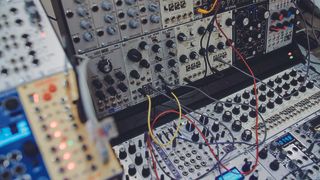
How are you creating beats?
“For drums, I use the Pioneer Toraiz SP16 a lot, which is a drum sampler with pads. I also love the Soma Laboratory LYRA-8 and especially the PULSAR-23, which is really new - it was only delivered to Richard Devine a month ago and I just got mine. It’s a drum synthesizer but it’s fucking weird. The SP16 is really straight-on and playable with finger drumming, but the PULSAR-23 is a total enigma, except it makes these amazing sounds!”
Are all these devices going into a mixer?
“All of that goes into an M12 mixer and I’m using sends to my Strymon BigSky, Strymon El Capistan and the Gamechanger Audio Plasma Pedal, which is amazing - it’s mono, which is a bit yuck, but it’s so fucked up it’s good. It’s a tube of plasma, like a neon or argon gas - I’m not sure which, and you route the signal through there via electricity so you can really see it catching on. It has this cutoff point where the amplitude is not strong enough to make the electricity go through, so it looks like a fluorescent lamp that’s dying and goes ‘krschhhhh’. That electric-sounding distortion is really amazing.
"At the end of the mixer there’s a little mastering chain comprising a 30-year-old EQ that I found on eBay - the JVC Nivico SEA-100, which is an induction EQ. It was recommended on Gearslutz for $50 and is really juicy with some great lo-fi properties.”
What key software plugins are you using?
“Serum is an excellent VST plugin and the Kontakt libraries are great, but I find the Airwindows plugins are amazing too. Otherwise, I love using FabFilter’s Saturn 2 because it’s a nice little distortion.”
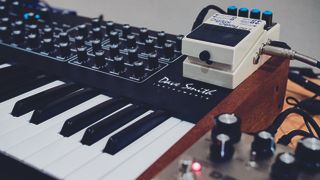
You’re arranging and editing in Cubase?
“I was in Ableton for years, but I’m really in love with the new Cubase 10.5. I was born and raised on Cubase but came back to it because I began watching Junkie XL’s Studio Time series. After he started explaining his library-based workflow in Cubase, I was like, ‘oh shit, Cubase is the place for film scoring so I have to go back to it’. Right now, I’m dual-wielding Ableton for electronic stuff and Cubase for the more cinematic/storytelling music.”
How is the music with Amon Tobin progressing?
“It’s done. The first track we did together was nine years ago, but the most recent one we worked on isn’t even a year old. We did the Ghostcards EP earlier this year, which is very cute and melodic music, and the new stuff is also very melodic and atmospheric but not cute - it’s big, dark electronic sci-fi stuff that we’re big fans of.
"Most of the work was done in Amon’s studio in LA, but I had another two months with these songs where I was just sending him new versions and finished all of it in Groningen. It should be out at the end of this year.”


Future Music is the number one magazine for today's producers. Packed with technique and technology we'll help you make great new music. All-access artist interviews, in-depth gear reviews, essential production tutorials and much more. Every marvellous monthly edition features reliable reviews of the latest and greatest hardware and software technology and techniques, unparalleled advice, in-depth interviews, sensational free samples and so much more to improve the experience and outcome of your music-making.

“My love letter to a vanished era that shaped not just my career but my identity”: Mark Ronson’s new memoir lifts the lid on his DJing career in '90s New York
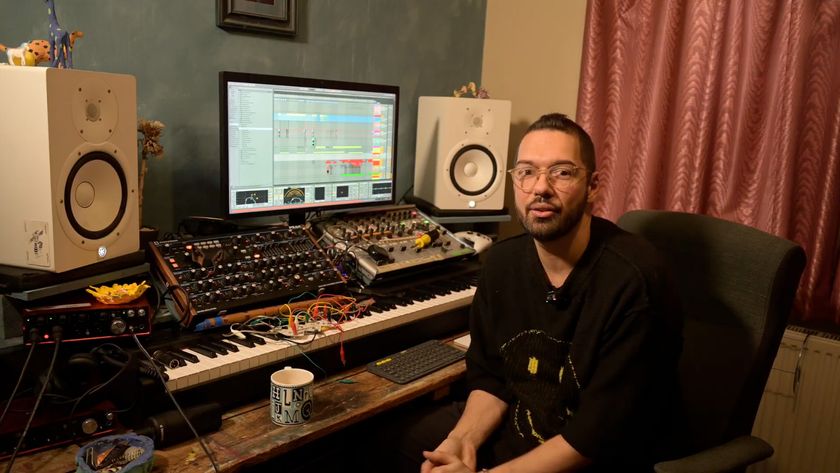
“I'm always starting up sessions and not finishing them, but I don't see that as unproductive”: Virtuosic UK producer Djrum talks creativity and making Frekm Pt.2









